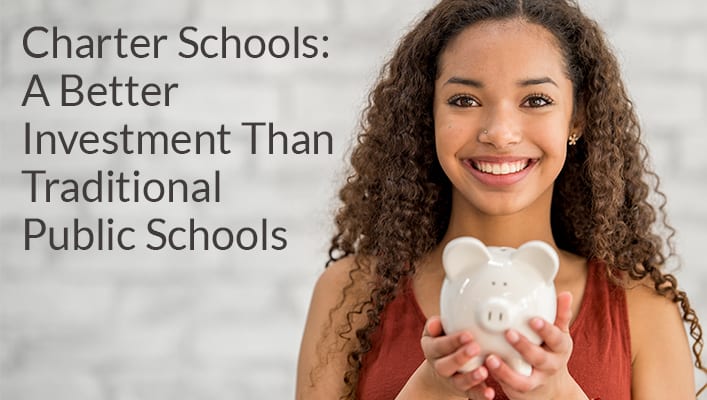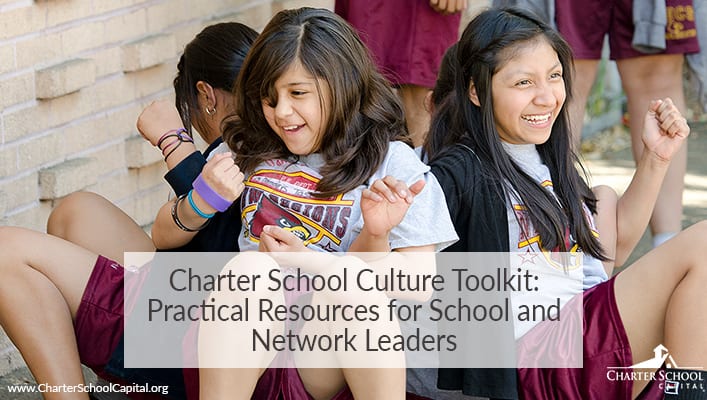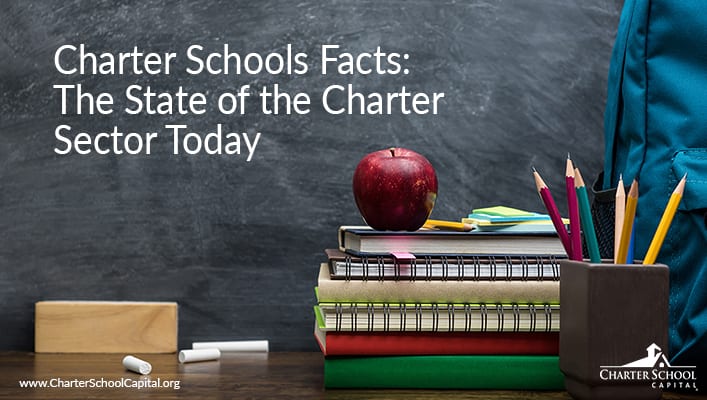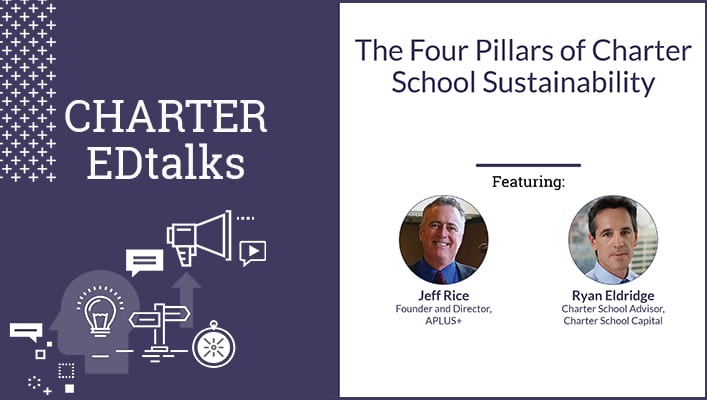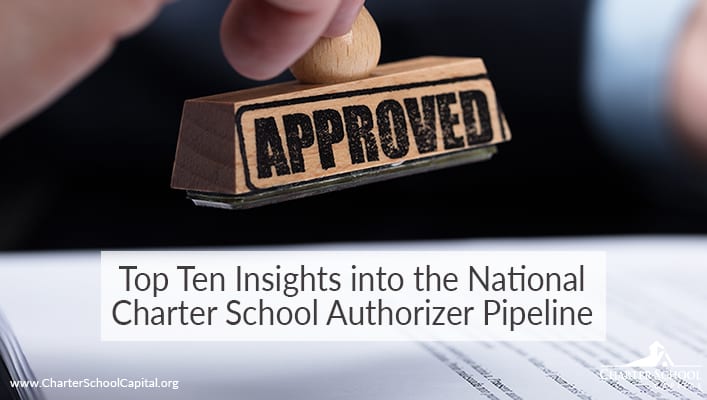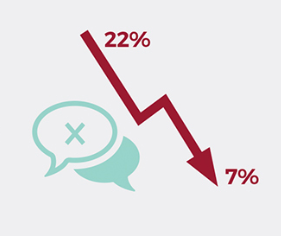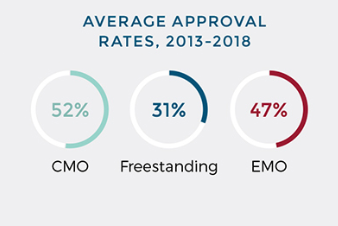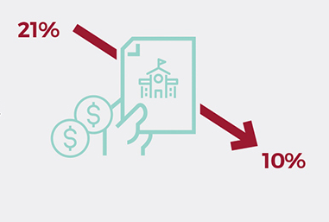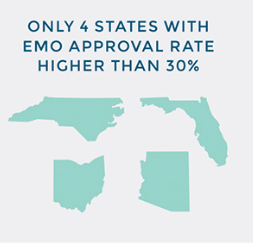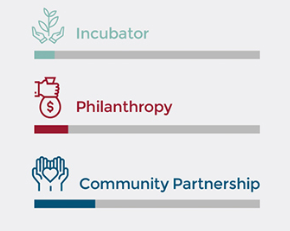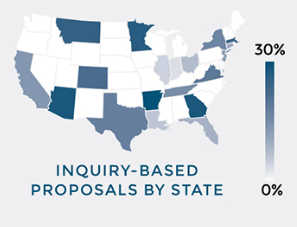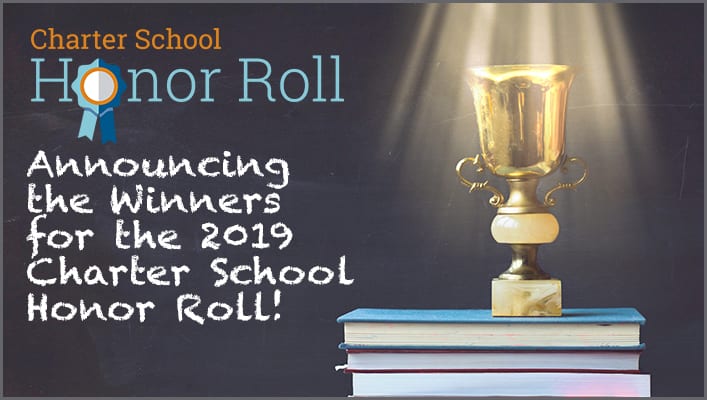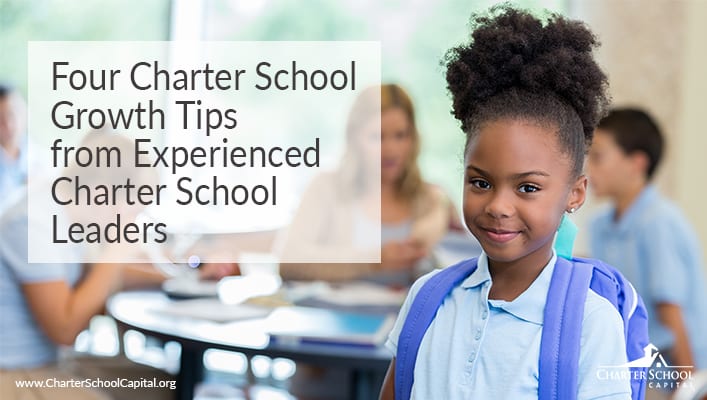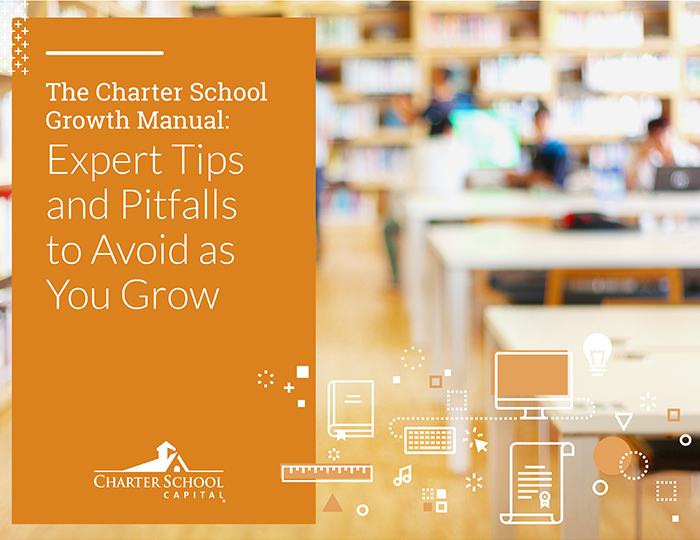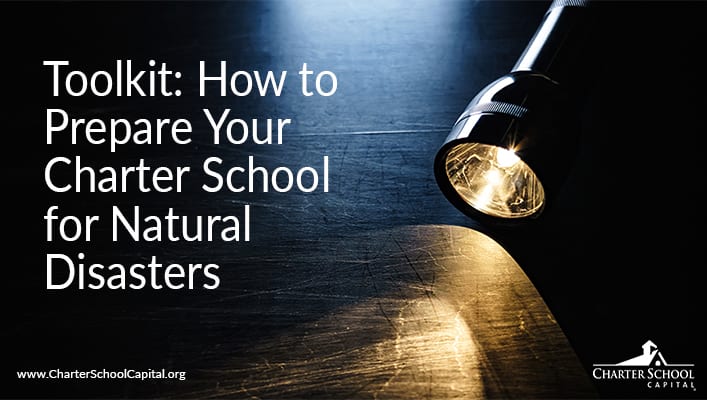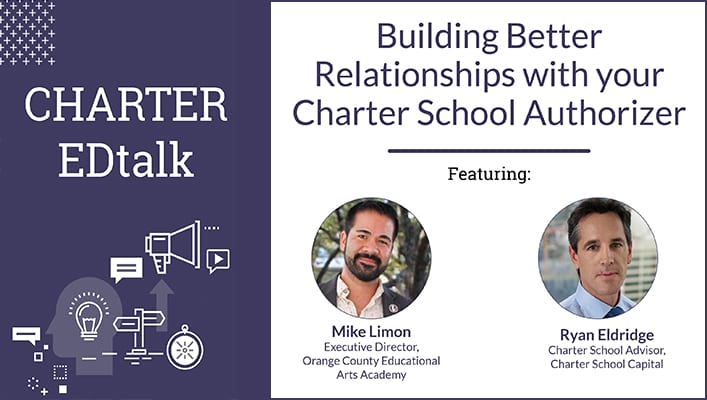 Tips on Building Better Relationships with Charter School Authorizers
Tips on Building Better Relationships with Charter School Authorizers
For this episode of our CHARTER EDtalks, Ryan Eldridge, one of Charter School Capital’s Charter School Advisors, had the honor of sitting down with Mike Limon, Executive Director at Orange County Educational Arts Academy (OCEAA), to discuss actionable tips for building better relationships with charter school authorizers.
To learn the tips on how to build better relationships with your charter school authorizers, please watch the video or read the transcript below to get the full story.
Building Relationships with Charter School Authorizers
Ryan Eldridge: Hello there and thank you for joining us in this episode of CHARTER EDtalks. I’m Ryan Eldridge, Charter School Advisor for Charter School Capital, and I’m honored to be joined by Mike Limon, Executive Director at Orange County Educational Arts Academy (OCEAA). And we’re going to be discussing building better relationships with charter school authorizers.
Mike Limon: Great.
Eldridge: So, thank you, Mike, for joining us. We appreciate it.
Limon: Thanks for having me.
Eldridge: Why don’t we just jump right into it.
Limon: Sure.
Breaking Down Barriers, Collaborating, Accountability
Eldridge: The first question is, “Can you define what building better relationships with charter authorizers means to you?”
Limon: Sure. So before even I dive into that, I want to give a big thank you to the Santa Ana Unified School District. They’ve been great at getting me up and running because this is year one for me as executive director.
So, I’m definitely excited to dive in, learn, and build relationships. And so, with that, the bigger topic is the students. We’re here to educate all students, whether they’re in a public charter school, a traditional school, a private, a Catholic school, etc., whatever. We’re here to educate them together. And so, with that, the word in my mind that pops up is collaboration. Let’s break down those barriers and truly collaborate together as the authorizer and the public charter school.
We want to work beyond just our traditional responsibilities that board members have. There’re responsibilities that they’re held accountable to, and I have my responsibilities that I’m held accountable to. Let’s not lose sight of how we can go beyond those responsibilities and build a tighter relationship to educate all our students in our district.
A lot of folks have this very transactional process or experience with their charter school manager or their authorizers, or the board themselves—very transactional. I want to break beyond that and truly build a partnership with them to figure out how to elevate our students to the next level.
How to Build Those Relationships
Eldridge: What does effective relationship-building look like?
Providing Feedback
Limon: People traditionally just go in and submit interim budget reviews or attendance reports, just check the box off. For me, again, I want to break down those barriers, get to know who these people are that sit on the board, and also the folks behind the scenes. The assistant superintendents, the charter school manager, or whatever their title is, breaking that down and building processes together, because I know that the school districts are also trying to systematize their processes.
And even, for example, in Santa Ana, they just started using this new tool called Epicenter, and so I think its year one for them, if I’m not mistaken. But I know that they’re also trying to figure out how it works, how to systematize it, how to make it better for both users. I know that it’s a brand new tool, so for them, they want to go in and try to customize things.
If you don’t give them constructive criticism or feedback on how to elevate their processes, we’re not going to get anywhere versus just submitting your traditional transactional paperwork, etc.
One of the things I’ve learned in working with them … and I call them. I email them. I text them when I need something or just education as well, because we’re cross-educating each other.
They don’t know what our challenges are either because they’re not in our shoes every day throughout the year. They come in maybe twice a year, check out the school, that kind of thing. But if we’re not giving them feedback, we can’t help them help us make our jobs easier.
Because at the end of the day, charter school teams are pretty small, and so to be able to have another informal colleague on the other side supporting you and cheering you on, you can’t really get anywhere. Again, it’s a very fast-paced environment as well. If you’re not creating constant touchpoints or conversations, you can’t really elevate processes.
Build relationships at the city, county and state level
Limon: The other thing, too, that came up with this conference—and this was only day one—is the notion … because my authorizer is Santa Ana. We’re in Santa Ana, so for us, it’s easy to just quickly build relationships with them.
But also, at the county level, that’s something that is a best practice. You should be building relationships with them as well if you have a city authorizer. We forget.
We focus all our energies on developing those relationships with the city, but we lose sight that we also should be building relationships at the county level and even at the statewide level as well because sometimes, even in Santa Ana, they may not have answers to some of your questions.
To be able to have someone that you can call at the state level, at the county level, that you already built relationships with … because sometimes you might be down to the wire trying to get some things done, and you definitely need that support to try to answer that question.
Just building processes together to be more effective in the long term. You’ve got to plant the seed to gain the results a year later. If you start now and have those meaningful touchpoints and help them help you, it’s definitely very effective.
If you build it, will they come?
Eldridge: Can you give me a few examples of how you can collaborate with a charter authorizer in the school board?
Limon: I’ll start off with very simple things first, and then I’ll dive into some recent things that have just come up as far as opportunities for me.
You know your traditional site visits; have coffee, get them to come to your events. Constantly invite them out. It’s going to be really hard to get them on your calendar because, especially for Santa Ana, our district is pretty large and there’s constant events happening at their schools. And there’s fundraisers and “munch and learns” and etc. I see all kinds of formats of events.
Just get them to come out to your school, let them get to know who your students are, who your teachers are, who the families are … because there’s all these misconceptions about the people that we serve at our charter schools. And for our school, for example, we’re about 86%, 87% Latino/Hispanic students that we serve. The misconception in the community is that it’s the other way around, very low Hispanic rates that we serve, which is completely wrong.
For us, to get them to come out … and it doesn’t have to be a school board, it could be some other staff, maybe even some other teachers to come out and see who we are so that as they’re telling the story about OCEAA in the community and they have a good understanding [of who we are].
They’ve been in the classrooms. They’ve seen the parents. They’ve engaged with them. That’s definitely something I’m going to be really pushing for the next year.
It’s going to take a lot of work because even just for you guys as service providers, to be able to educate people in your programs and get people to come in and learn about the services you offer, it takes a lot of work. It’s kind of that similar situation, so I’m going to have to work my butt off to try to get them to come into our buildings.
One other thing that, for me, I’m lucky I’m in downtown Santa Ana, we have food, great food, throughout the city that we’re in. Just trying to get them on the calendar to come to break bread with me would also be an easy ask. They’re breaking bread at a very yummy place that’s maybe not so hoity-toity. And that builds that relationship a little further.
Do your homework, get involved, and get connected!
Limon: A lot of them are also very involved with community organizations or non-profits in the Orange County area. For example, the Orange County Hispanic Chamber of Commerce, the National Latina Business Women Association. There’re these ethnic organizations that these board members of Santa Ana support and maybe even have leadership roles in, which I’ve been doing for the last decade or so. I’m on the board of the California Hispanic Chambers of Commerce here in Sacramento. And there’s all this synergy happening to elevate Hispanic youth or even leaders already in the community supporting each other, paying it forward.
Doing some homework with regards to where you are in the nation or California on where these board members spend the rest of their time.
Do they support other organizations?
Figure out what interests them and work with them to build that relationship aside from your day-to-day responsibilities, like I was mentioning earlier, get to know them on a personal level and start to build that relationship, because, as we all know, we’ve got those interim budgets, the renewal. There’s all this compliance that we have to do. If you start building those relationships and even planting the seed or even asking, “Okay, so for this year, for the renewal this time around, what are the things that we need to start preparing for?”
Because it’s probably a good time to start preparing for that renewal. You never know with all the laws that come up and those constant changes. To be able to have someone to call on really quickly versus at the last minute, 30 days coming up, you’re probably scrambling, and you don’t really have any relationships that you’ve established, that’s going to be a huge challenge for these folks.
Again, community relationships, building those processes, those collaboration opportunities, get to know who they are.
And then something that just happened recently with me is the school board president just invited me to be a principal for the day at one of their schools, and I feel so honored. So, thank you, Santa Ana. But to get that opportunity to go and be an admin at one of their schools as a charter leader, I think that’s a home run right there.
Eldridge: Absolutely.
Limon: And it goes back to all the work that I’ve been doing over the last few months and trying to build relationships with them, supporting them. Of course, there are only so many hours in the day, and I would love to duplicate myself and get out to more events and support them. But you have to have that balance because you don’t want to burn yourself as well at the end of the day.
It’s been quite the ride so far, and I’m looking to see what the future holds in partnership with you guys. You guys have been great as educators, educating our school on different opportunities and how we can focus on our facilities because that’s a big challenge as well for other organizations out there. I didn’t realize that.
Even for us, for example, we had a short-term challenge with flooding with all these rains. And so, you quickly get a reminder about the importance of facilities. And so, we’ve been chatting just recently about how we can elevate our school with your support.
Eldridge: Well, great. Well, that wraps up this episode of CHARTER EDtalks. Mike, thank you very much for joining us. We appreciate it.
Limon: Thanks for having me.
Eldridge: And hopefully it was beneficial to you viewing out there. Take care.
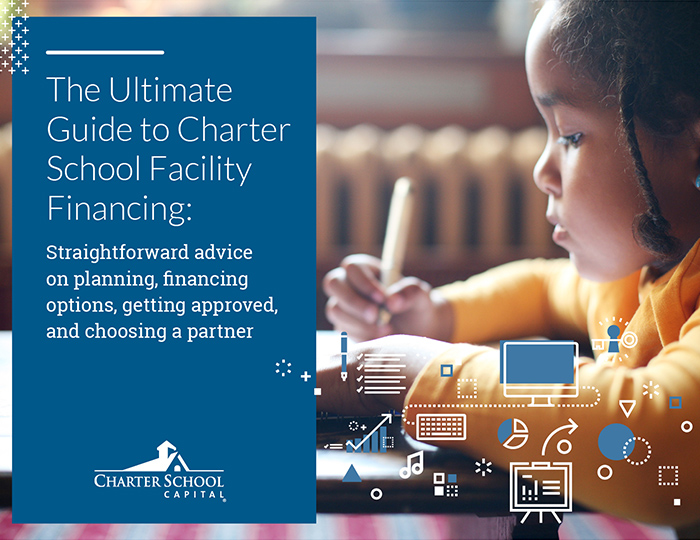
The Ultimate Guide to Charter School Facility Financing:
In this CHARTER EDtalk, Mike chatted about potential upcoming facilities projects he’s considering. Are you thinking about a new facility for your charter school or enhancing your current one? This guide shares straightforward and actionable advice on facilities planning, financing options, getting approved, choosing a partner, and much more! Download it here.
